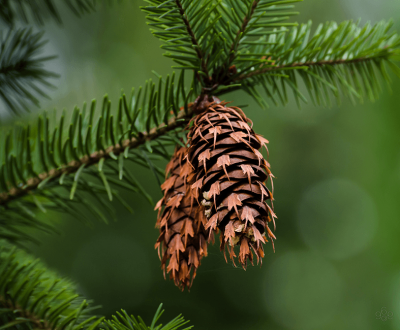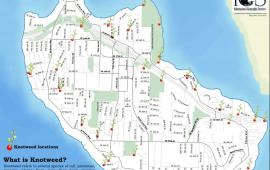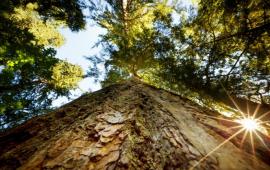Restoration Program, Plans & Progress
Restoration Program Overview
Mercer Island boasts 307 acres of beautiful forested parks and natural areas/open spaces that provide a range of ecosystem services and benefits including wildlife and aquatic habitat, slowing of storm water runoff, air quality improvements, and temperature buffering.
Invasive plants such as English ivy and Himalayan blackberry threaten the existing forest canopy and understory, suppress the next generation of native trees and shrubs from establishing, and decrease habitat quality.
Mercer Island Parks and Recreation works with professional contractors, a seasonal restoration crew, and community volunteers to remove invasive weeds and replant with native trees and shrubs. The program seeks to ensure the long-term sustainability of the City's invaluable natural areas for current and future generations.
Open Space Vegetation Plan & 10-year Update
Restoration work is guided by the 2004 Open Space Vegetation Plan. In March 2015, Mercer Island City Council adopted an update to this plan. The Open Space Vegetation Plan 10-Year Evaluation and Update reports significant progress on forest health. Invasive cover has been reduced by 50% over the past ten years, and native conifer regeneration averages 78 trees per acre, up from near zero in 2004. This update also includes a climate adaptation strategy to anticipate the rapid rise in atmospheric temperature anticipated over the next 100 years and the profound impacts that will have on forest ecology.
Mercer Island Tree Canopy Assessment
This survey (last conducted in 2018) tallies the total amount of public and private tree cover on the Island.
Pioneer Park Forest Management Plan & Forest Health Survey
Pioneer Park is a 113-acre park consisting of three 38-acre parcels of second-growth conifer forest. The park represents the largest forest habitat remaining on the island. The Pioneer Park Forest Management Plan (adopted in 2003, amended 2009) and 2008 Forest Health Survey provide the City a framework for forest management - including strategies and benchmarks - to ensure a healthy sustainable native forest for years to come.
Questions? Email restoration@mercerisland.gov
Restoration Program Progress
| Restoration Activity | 2005-2006 | 2007-2008 | 2009-2010 | 2011-2012 | 2013-2014 | 2015-2016 | 2017-2018 | 2019-2020 |
|---|---|---|---|---|---|---|---|---|
| Total acres worked | 88.3 | 99.2 | 204 | 139 | 149.7 | 110 | 133 | 213 |
| Trees planted | 3,799 | 2,407 | 12,947 | 5,705 | 6,574 | 3,559 | 1,652 | 20 |
| shrubs planted | N/A | 2,066 | 2,027 | 3,027 | 4,470 | 3,315 | 4,132 | 325 |
| Ivy survival rings * | 2,233 rings | 30.4 | 37.4 | 21.5 | 62.4 | 18.3 | 40.7 | 67 |
| Volunteer events | 125 | 92 | 109 | 114 | 101 | 94 | 101 | 36 |
| Volunteers | 1,312 | 2,089 | 4,148 | 6,496 | 3,104 | 3,040 | 3,150 | 744 |
| Volunteer hours | 2,260 | 8,371 | 13,547 | 12,684 | 13,008 | 10,065 | 11,092 | 2,448 |
*acres unless otherwise noted





